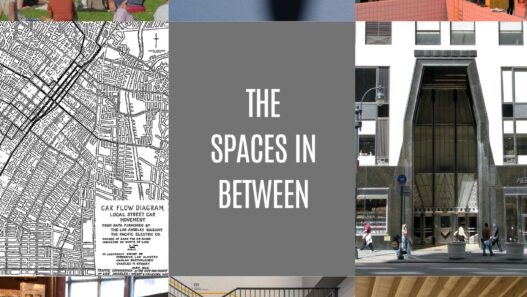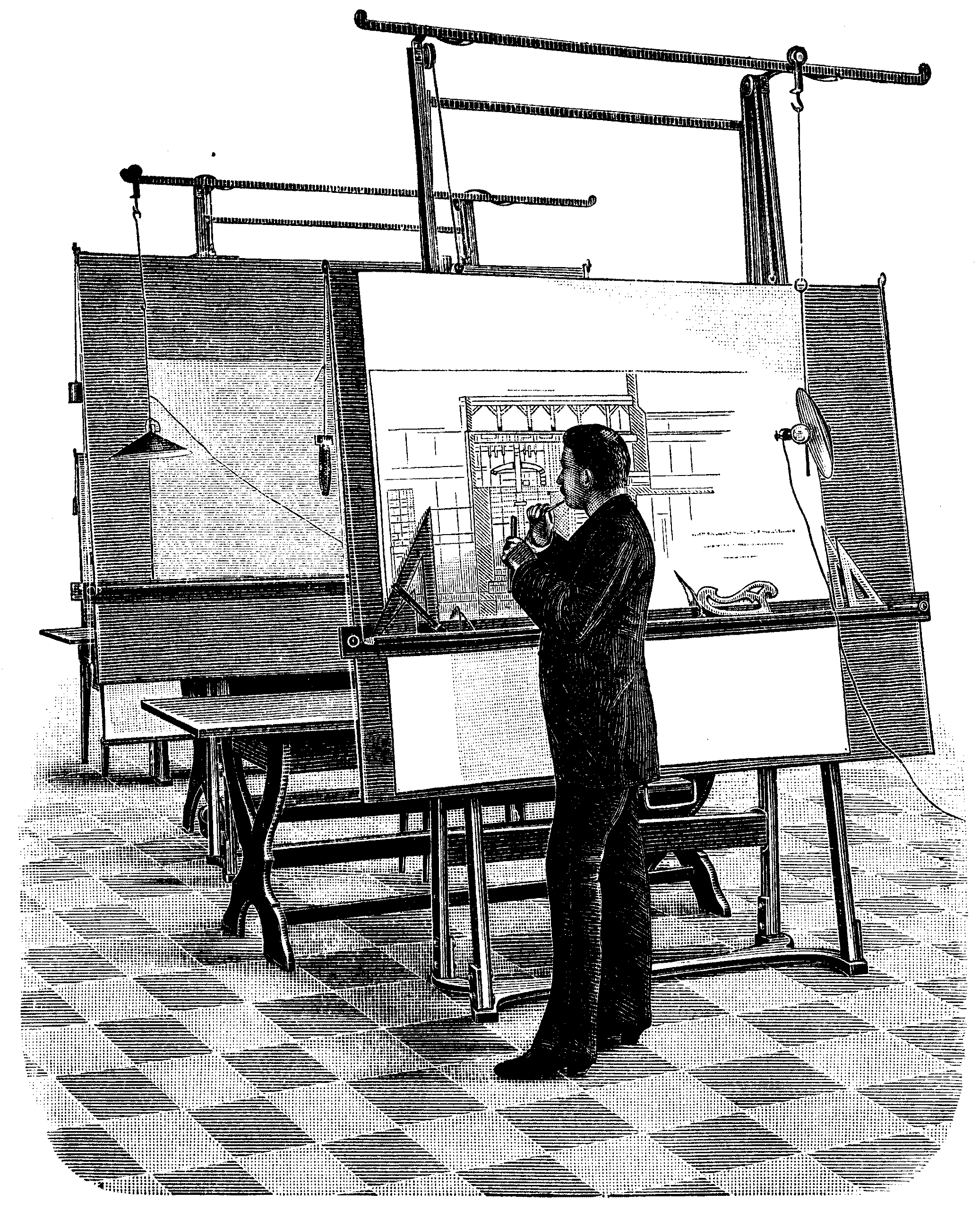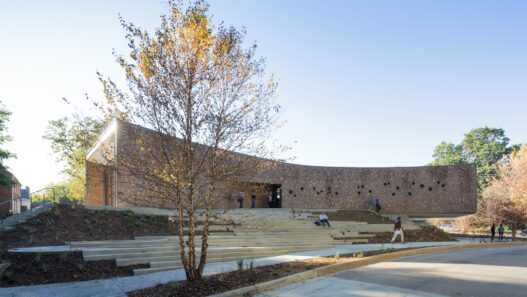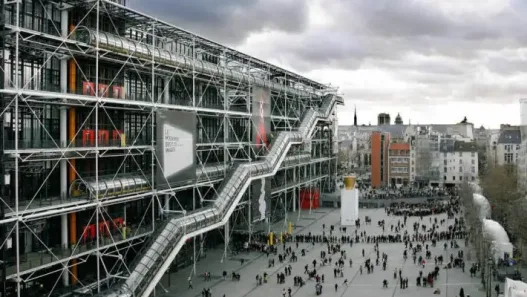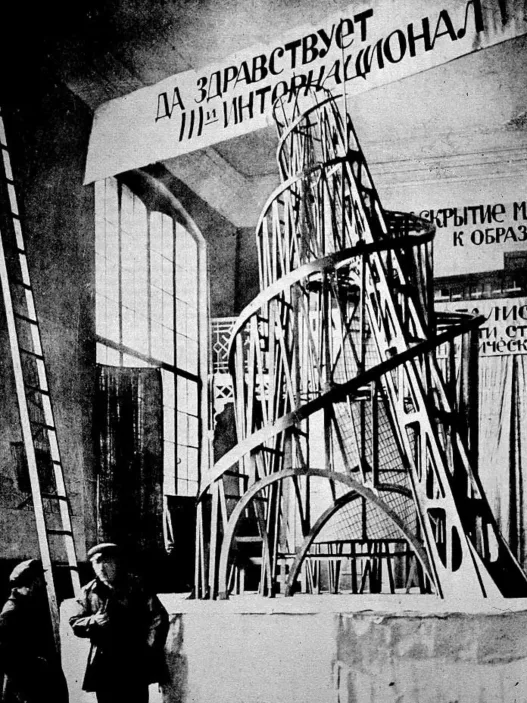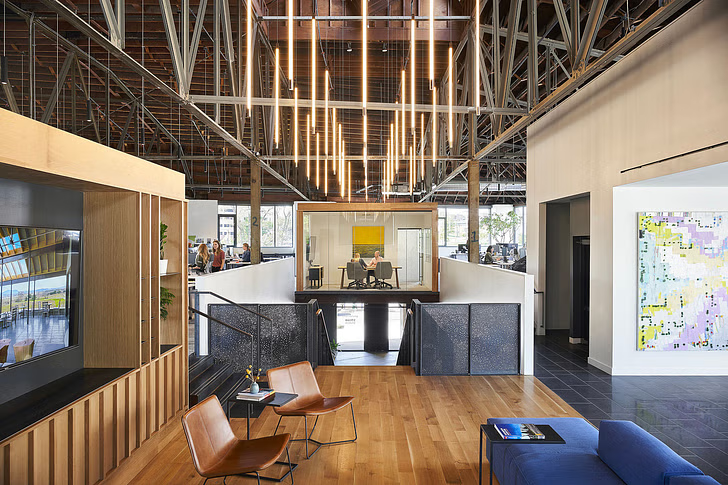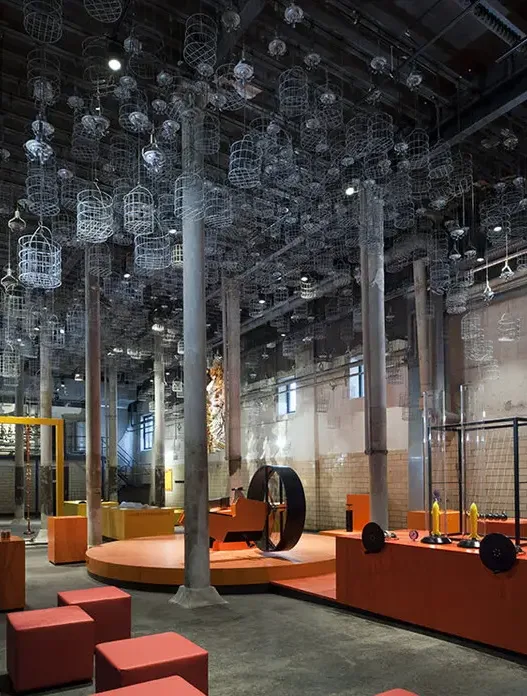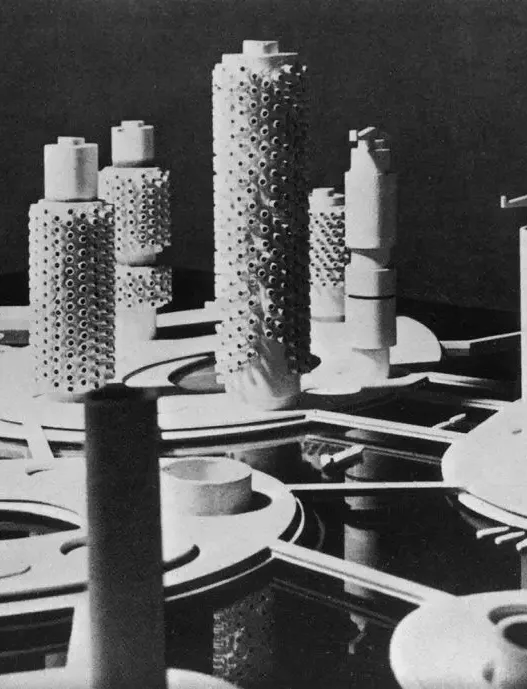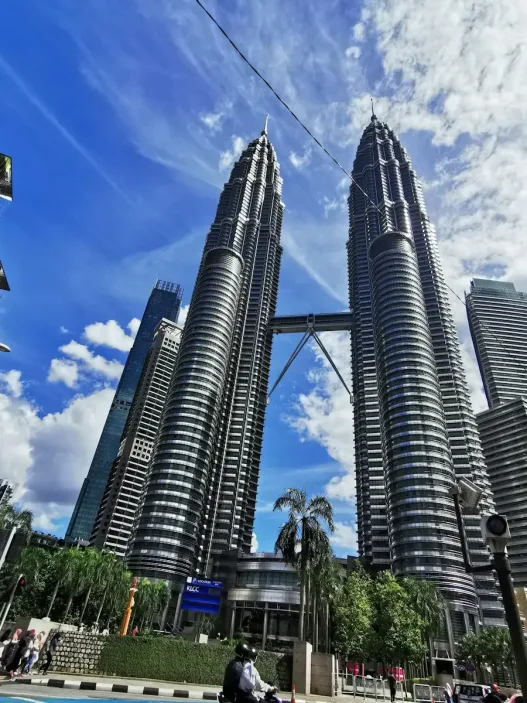High-tech architecture represents a remarkable intersection of technology and design, where the functionality of buildings is enhanced through innovative materials and construction methods. This architectural style emphasizes the use of advanced engineering techniques, showcasing the potential of modern technology in creating spaces that are not only visually striking but also incredibly efficient.

Definition and Origins
In essence, high-tech architecture is defined by the integration of advanced technology and engineering principles into building design. This approach emerged in the late 20th century, particularly in the 1970s, as a response to the increasing complexity of urban environments and the need for buildings that could adapt to new technological developments. The term usually encompasses structures that visibly express their technological components, such as open structures, mechanical systems and the use of industrial materials.
The origins of high-tech architecture can be traced back to earlier movements such as modernism and brutalism, which focused on functionality and the honest expression of materials. But high-tech architecture takes these concepts further by incorporating the latest technology into the fabric of design, transforming the way buildings work and interact with their surroundings.
Key Features
High-tech architecture is characterised by several distinctive features that distinguish it from traditional architectural styles. One of its most prominent features is the visibility of structural and mechanical systems. This transparency allows occupants and observers to appreciate the complexity of the building’s design and operations.
Furthermore, high-tech structures often utilise modular construction techniques, allowing flexibility and adaptability in design. The use of innovative materials such as glass, steel and lightweight composites is also a hallmark of this style, allowing for large spaces and unique forms. Sustainability also plays an important role; many high-tech buildings incorporate renewable energy sources and smart technologies to minimise their environmental impact.
Historical Context
The rise of high-tech architecture can be associated with significant social and technological changes in the second half of the 20th century. Rapid advances in technology and materials science in the post-World War II period paved the way for architects to explore new possibilities in design. Influential names such as Richard Rogers and Norman Foster emerged during this period, pushing the boundaries of traditional architecture and embracing the potential of technology.
The Centre Pompidou in Paris, designed by Rogers and Renzo Piano, stands as an excellent example of high-tech architecture. Its bold, open structure and vibrant colour palette highlight the building’s mechanical systems and create a lively urban space. This building, along with other buildings of its period, signalled a shift in how architecture could respond to contemporary needs, emphasising innovation and functionality.
Impact of Technology
Technology has profoundly influenced high-tech architecture, shaping both the design process and the final outcome of buildings. The introduction of computer-aided design (CAD) has revolutionised the way architects conceptualise and visualise their projects. These digital tools allow for greater precision and creativity, enabling the exploration of complex geometries and dynamic forms that were previously unattainable.
Furthermore, advances in construction techniques such as prefabrication and modular construction have made it possible to build structures more efficiently and sustainably. High-tech buildings often incorporate smart technologies that improve energy efficiency, such as automated lighting and climate control systems, reflecting the growing awareness of environmental issues and the need for sustainable practices in architecture.
Aesthetic Considerations
Although high-tech architecture is deeply committed to functionality and technology, aesthetic concerns are paramount. The interplay between form and function is a defining aspect of this style. Architects strive to create visually compelling structures that glorify their technological components, resulting in buildings that are not only practical but also striking.
The aesthetics of high-tech architecture often adopt a futuristic vision, characterised by sleek lines, open spaces and an industrial feel. However, this style also allows for personal expression and creativity. By combining innovative materials and advanced technology with thoughtful design, high-tech architecture can create spaces that resonate with the human experience, inviting residents to interact with their surroundings in meaningful ways.
In sum, high-tech architecture represents a fascinating blend of aesthetics and functionality, driven by technological advances and innovative design principles. As we continue to explore this dynamic field, we gain insight into how architecture can evolve to meet the challenges of modern society while remaining committed to beauty and creativity.
High-tech architecture represents an extraordinary blend of innovation and design, where aesthetic appeal meets advanced technology. This architectural style emerged in the late 20th century as a response to the increasing complexity of modern life. It emphasises transparency, flexibility and the use of industrial materials such as glass and steel and often showcases the structural elements of the building. This combination creates spaces that are not only visually striking but also highly functional and reflect the dynamic nature of contemporary society.
In this research, we will examine some iconic examples of high-tech architecture that exemplify these principles and reveal how these buildings integrate advanced technology with artistic vision.
Iconic examples of high-tech architecture
Pompidou Centre
Located in the heart of Paris, the Centre Pompidou stands as a beacon of high-tech architecture. Designed by architects Renzo Piano and Richard Rogers, this cultural centre was completed in Paris and has since become one of the most recognisable buildings in the world. A radical departure from traditional architecture, its design incorporates an open structural system with bright colours and a bold industrial aesthetic. The building’s mechanical systems, including escalators and ventilation ducts, are prominently displayed on the façade, emphasising functionality and transparency.
The Centre Pompidou houses a large public library, a cinema and the National Museum of Modern Art. Its open design invites discovery, allowing visitors to experience art and culture in a dynamic environment. The building serves not only as a cultural institution but also as an iconic symbol of modernity and innovation, demonstrating how high-tech architecture can reshape urban spaces.
Lloyd’s Building
Located in the heart of London’s financial district, the Lloyd’s Building is another important example of high-tech architecture. Designed and completed by architect Richard Rogers, it is often referred to as the “Inside Out Building” due to its unique design. The building’s services, including lifts, plumbing and electrical systems, are located on the exterior, allowing for a flexible and open interior. This innovative approach not only maximises usable space, but also creates a visually striking façade that challenges traditional architectural norms.
The Lloyd’s Building houses the Lloyd’s of London insurance market and its design reflects the forward-thinking ethos of the organisation. The building’s glass and steel structure, combined with its exposed mechanical systems, creates a sense of transparency and efficiency, a fitting representation of the financial sector it houses.
Pompidou Centre Málaga
Extending the legacy of the original Centre Pompidou in Paris, the Pompidou Centre Málaga exhibits the same high-tech principles in a new context. Designed by the architects of the original centre, this cultural venue is characterised by its colourful, cube-like structure with a large glass façade that invites natural light into the interior. The building serves as a centre for contemporary art, hosting exhibitions and cultural events of interest to the local community.
The design of the Pompidou Centre Málaga emphasises accessibility and interaction with open spaces that encourage visitors to explore and engage with art. Integrating modern technology and sustainable practices, the centre not only honours its predecessor in Paris, but also demonstrates the versatility of high-tech architecture, blending into Malaga’s unique cultural landscape.
California Academy of Sciences
Located in San Francisco’s Golden Gate Park, the California Academy of Sciences is a striking example of high-tech architecture in harmony with its natural surroundings. Designed by architect Renzo Piano and completed in 2008, the building features a living roof covered with native plants, promoting biodiversity and sustainability. This innovative design not only enhances the aesthetic appeal of the building, but also contributes to its energy efficiency.
The academy houses an aquarium, a planetarium and a natural history museum, creating a well-rounded educational experience. The use of natural materials and advanced technologies such as solar panels and rainwater harvesting systems reflect a commitment to environmental stewardship. The California Academy of Sciences exemplifies how high-tech architecture can create a deeper connection between humanity and nature, creating spaces that educate and inspire.
Eden Project
Located in the hills of Cornwall, England, the Eden Project is an extraordinary testament to high-tech architecture and environmental sustainability. Designed by architect Sir Nicholas Grimshaw and opened this year, this ecological park contains a series of biomes that harbour a variety of plant species from around the world. Made from a unique hexagonal ETFE material, the geodesic domes are not only visually stunning but also energy efficient.
The Eden Project serves as an educational and conservation centre that promotes awareness of global environmental issues. Its innovative design demonstrates how high-tech architecture can be used to create immersive and educational spaces that emphasise the importance of biodiversity. Integrating advanced engineering with ecological principles, the Eden Project serves as a model for future architectural endeavours aimed at addressing environmental challenges.
In sum, these iconic examples of high-tech architecture demonstrate the profound impact of design on our built environment. Combining aesthetic concerns with cutting-edge functionality, these structures not only beautify our cities, but also enrich our experiences within them. High-tech architecture continues to evolve, inspiring future generations to explore the limitless possibilities of design and technology.
High-tech architecture represents a dynamic fusion of art and technology, where structural design embraces modern materials, innovative engineering and advanced systems. This architectural style emerged in the late 20th century and is characterised by transparency, modularity and a celebration of the functional components of the building. As we explore the design principles that underpin high-tech architecture, we will uncover how these concepts not only enhance visual appeal, but also improve usability and sustainability in our built environment.
Design Principles in High Technology Architecture
Structural Expressionism
At the heart of high-tech architecture lies structural expressionism, a principle that advocates the visibility of a building’s skeleton and systems. Unlike traditional architectural styles that often hide their structural elements, high-tech designs celebrate them and allow beams, columns and mechanical systems to become integral parts of the aesthetic.
This approach creates a sense of honesty and transparency, where the building’s materials and construction methods are openly displayed. Take the Pompidou Centre in Paris, designed by Renzo Piano and Richard Rogers, as an iconic example. Its exposed steel structure and colourful pipes not only serve functional roles but also contribute to its identity, making it an icon of modern architecture. Such designs encourage a deeper understanding of how buildings function by inviting viewers to appreciate the engineering feats behind the walls.
Flexible Spaces
Flexibility is another cornerstone of high-tech architecture, reflecting a modern understanding of how spaces should adapt to the changing needs of their occupants. High-tech buildings often utilise modular designs that allow interiors to be easily reconfigured. This adaptability is crucial in a world where working styles and lifestyles are constantly evolving.
The design of co-working spaces, for example, embodies this principle by providing open spaces that can be converted into co-working spaces or private offices as required. High-tech architecture combining movable walls, versatile furniture and open floor plans empowers users to shape their environment. This fluidity not only enhances functionality, but also encourages creativity and interaction between building occupants.
Sustainable Design
Sustainability is a critical issue in contemporary architecture and high-tech design principles are often intertwined with environmentally friendly practices. The use of advanced materials and technologies allows architects to create energy-efficient buildings that minimise their environmental impact. High-tech designs often utilise renewable energy sources such as solar panels and wind turbines, as well as innovative insulation methods that reduce energy consumption.
The Eden Project in the UK is an example of sustainable high-tech architecture. Its geodesic domes, made from ETFE (a lightweight, transparent material), harbour diverse ecosystems while taking advantage of natural light and minimising heating costs. Such projects not only emphasise the aesthetic potential of sustainable design, but also offer practical solutions to pressing environmental problems.
Integration of Systems
One of the hallmarks of high-tech architecture is the seamless integration of various systems (structural, mechanical, electrical and plumbing). This integration is necessary to optimise the performance of the building and increase user comfort. High-tech buildings often have smart technologies that monitor and adjust environmental conditions, providing a pleasant atmosphere while conserving resources.
Consider One Central Park in Sydney, which has advanced building management systems to control lighting, heating and cooling. By intelligently managing these systems, the building not only improves energy efficiency, but also enhances the quality of life for its residents. This holistic approach to design underlines the interconnectedness of architecture and technology, paving the way for smarter, more responsive buildings.
User Centred Approach
Finally, a user-centred approach underpins high-tech architecture. This principle emphasises the importance of designing spaces that prioritise the needs and experiences of the people living in them. By involving users in the design process and taking their feedback into account, architects can create environments that truly enhance everyday life.
The High Line in New York is an example of this principle in action. Once an abandoned railway, the High Line has been transformed into a vibrant public park that prioritises pedestrian experience and community engagement. Its design, which includes seating areas, greenery and art installations, invites residents and visitors to interact with the space. This focus on the user experience not only beautifies the urban landscape, but also fosters a sense of community and belonging.
As a result, the design principles of high-tech architecture – structural expressiveness, flexible spaces, sustainable design, systems integration and a user-centred approach – combine to create buildings that are not only visually striking, but also highly functional and responsive to the needs of their occupants. As we continue to explore the intersection of aesthetics and technology, high-tech architecture stands as a testament to the innovative spirit of our age and offers a glimpse into the future of our built environment.
High-tech architecture represents a fascinating intersection between design and technology, where innovative materials and advanced techniques redefine how we build and interact with our environment. This architectural style emphasises transparency, flexibility and a harmonious blend of form and function. As we explore the materials and technologies that characterise high-tech architecture, we uncover their transformative potential not only for aesthetics, but also for sustainability and efficiency.
Materials and Technologies Used
The field of high-tech architecture is rich with a variety of materials and technologies that allow architects to push boundaries and create spaces that are not only visually stunning but also highly functional. Each element plays a crucial role in shaping the overall experience of a building, responding to the needs of its users while addressing environmental concerns.
Glass and Steel Innovations
In high-tech architecture, glass and steel are not just materials but symbols of modernity and innovation. Glass facades allow plenty of natural light, creating bright, airy spaces that connect the indoors with the outdoors. Advances in glass technology have led to the development of energy-efficient glass that can regulate temperature and reduce glare, making buildings more comfortable and sustainable.
Steel, known for its durability and versatility, complements glass beautifully. It enables the creation of large, open spaces and supports complex designs that would be impossible with traditional materials. The combination of glass and steel not only enhances the aesthetic appeal of a building, but also contributes to its structural integrity. Iconic examples of this synergy can be seen in landmark structures such as the Louvre Pyramid in Paris, where the clarity of the glass contrasts with the solidity of the surrounding historic architecture.
Prefabrication Techniques
Prefabrication has revolutionised the construction industry by allowing building components to be manufactured off-site and then assembled on-site. This technique significantly reduces construction time and minimises waste, perfectly aligning with the principles of high-tech architecture that prioritise efficiency and sustainability.
The process involves creating modular sections that can be tailored to specific designs and ensuring a high level of quality control. Buildings such as Mjøstårnet in Norway, one of the world’s tallest timber structures, demonstrate how prefabrication enables rapid construction while maintaining aesthetic integrity. This method supports the idea of adaptive architecture, where spaces can evolve over time to meet changing needs.
Smart Materials
Smart materials are at the forefront of high-tech architecture, offering dynamic responses to environmental changes. These materials can adapt to temperature, light and even sound, enhancing the functionality and comfort of spaces. For example, photochromic materials change their properties in response to light, providing natural sun protection and reducing the need for artificial heating and cooling.
Another remarkable example is shape memory alloys, which can return to a predetermined shape when exposed to certain stimuli. This innovation opens up exciting possibilities for responsive architecture, where buildings can adapt to their surroundings, improving energy efficiency and user comfort. With its geodesic domes made of ETFE (ethylene tetrafluoroethylene), the Eden Project in the UK demonstrates how smart materials can create striking forms while promoting sustainability.
Energy Efficiency Technologies
Energy efficiency is a cornerstone of high-tech architecture, driven by the need to create sustainable buildings that minimise their environmental impact. Technologies such as solar panels, green roofs and rainwater harvesting systems have become an integral part of modern design. These systems not only reduce energy consumption, but also contribute to the overall aesthetics and functionality of a building.
High-tech structures often incorporate advanced insulation materials and energy management systems that monitor and optimise energy use. Often referred to as the world’s greenest commercial building, the Bullitt Centre in Seattle exemplifies this commitment to sustainability. Design features include a solar array that produces more energy than the building consumes, demonstrating how energy efficiency can be seamlessly integrated into architectural design.
Automation and Control Systems
The rise of automation and control systems has transformed the way we interact with our built environments. Smart buildings equipped with advanced technology optimise lighting, heating and security while increasing occupant comfort. These systems allow remote monitoring and management, making it easier to maintain efficiency and safety.
For example, buildings can significantly reduce energy waste by using sensors to adjust lighting based on occupancy or natural light levels. One of the world’s smartest office buildings, The Edge in Amsterdam, utilises a sophisticated network of sensors to create a highly responsive working environment, adapting in real time to the needs of its occupants.
As a result, the materials and technologies that define high-tech architecture not only enhance the visual appeal of buildings, but also promote functionality and sustainability. As architects continue to explore innovative solutions, the future of high-tech architecture will become even more exciting, paving the way for a built environment as responsive and dynamic as the lives we live.
High-tech architecture represents a fascinating intersection of technology, design and urban development. This architectural style emphasises the use of advanced materials and construction methods, highlighting the beauty and functionality of these innovations. As cities grow and develop, high-tech architecture plays an important role in shaping urban environments, responding to the challenges of urbanisation and enhancing the experience of urban residents.
The Role of High Technology Architecture in Urban Development
High-tech architecture is not just about creating visually stunning buildings; it is fundamentally about addressing the complex needs of modern cities. As urban populations grow, so does the demand for innovative, efficient and sustainable infrastructure. High-tech architecture responds to this challenge by integrating advanced technology into the design and construction of urban spaces, ensuring that these spaces are not only functional, but also aesthetically pleasing and environmentally friendly.
Responding to Urbanisation
Urbanisation is a phenomenon that is transforming landscapes around the world. Cities are becoming denser, with more people living and working in smaller spaces. High-tech architecture is meeting this challenge by creating multifunctional spaces that optimise land use. For example, buildings designed with modular construction methods allow for rapid assembly and flexibility of use. This adaptability is vital in urban environments where the needs of the population can change rapidly. Architects are increasingly utilising smart technologies such as automated systems for lighting and climate control to improve the comfort and efficiency of urban buildings. These innovations not only improve the quality of life of urban residents, but also reduce the environmental footprint of urban life.
Improving Public Spaces
Public spaces are the heart of every city, where communities gather and interact. High-tech architecture enriches these spaces with interactive and dynamic elements. For example, parks and plazas can integrate smart technologies such as sensor lighting that adjusts to the time of day or the number of people present. This can create safer and more inviting environments. Furthermore, by using sustainable materials and designs, architects can transform underused or neglected spaces into vibrant centres of activity. The High Line in New York is a prime example, where a former railway line has been transformed into a lush, elevated park, combining technology with nature and revitalising the surrounding community.
High-Tech Architecture and Cultural Identity
While high-tech architecture often emphasises modernity, it can also serve as a canvas for cultural identity. In many cities, architects are utilising local history, traditions and materials to create buildings that resonate with the community. For example, the use of local art, traditional motifs and even local materials can place high-tech buildings in their cultural context. This approach not only fosters a sense of belonging among residents, but also encourages tourism and appreciation of local heritage. Buildings such as the Centre Pompidou in Paris demonstrate how high-tech design can honour cultural narratives while pushing aesthetic boundaries.
Urban Sustainability Initiatives
Sustainability is at the forefront of high-tech architecture. With pressing issues such as climate change and resource depletion, urban development must prioritise environmentally friendly practices. High-tech buildings often incorporate green roofs, solar panels and rainwater harvesting systems, demonstrating a commitment to minimising environmental impact. For example, Bosco Verticale in Milan exemplifies this trend with its vertical forests that not only provide habitat for urban wildlife but also improve air quality. These sustainable practices are not only good for the environment; they also improve the liveability of cities, making them healthier and more pleasant places to live.
Future Trends in Urban Planning
Looking to the future, high-tech architecture is poised to play an even more important role in urban planning. As technology continues to evolve, architects will increasingly utilise data and artificial intelligence to inform design decisions. This could lead to more responsive buildings that adapt to the needs of their occupants in real time. The concept of smart cities, where interconnected systems manage everything from traffic flow to energy consumption, is becoming a reality. As urban planners and architects collaborate more closely, we can expect to see innovative solutions that address the complexities of urban life, ensuring that cities remain vibrant, sustainable and inclusive.
As a result, high-tech architecture is transforming urban development by responding to the challenges of urbanisation, enhancing public spaces, preserving cultural identities, championing sustainability and embracing future trends. As we navigate the complexity of modern cities, this architectural trend offers a blueprint for creating environments that are not only functional and beautiful, but also deeply attuned to the needs of their inhabitants.
Criticisms and Challenges of High-Tech Architecture
High-tech architecture, characterised by the innovative use of materials and technology, has had a significant impact on contemporary design. While offering a unique blend of aesthetics and functionality, it is not without its critics and challenges. Understanding these issues is vital for architects, designers and stakeholders navigating the complexities of modern building practice.
Aesthetic and Functionality Debate
One of the most important debates surrounding high-tech architecture revolves around the balance between aesthetics and functionality. Proponents argue that the sleek, modern designs often associated with high-tech buildings such as the Centre Pompidou in Paris or Lloyd’s building in London provide a new visual language that reflects technological progress. However, critics argue that these designs prioritise form over function, compromising the usability of the spaces they create.
For example, buildings with exposed structural elements and mechanical systems may be striking in appearance, but may pose challenges in terms of comfort, acoustics and usability. This discussion prompts architects to consider how best to integrate aesthetic appeal with the practical needs of building occupants. As a result, finding a harmonious balance is essential to creating spaces that are not only visually captivating, but also effectively serve their purpose.
Environmental Concerns
Environmental sustainability is another critical issue facing high-tech architecture. While many high-tech buildings incorporate advanced technologies aimed at energy efficiency, such as solar panels and intelligent climate control systems, there are concerns about the overall ecological footprint of these structures. The production and maintenance of high-tech materials can be resource intensive, raising questions about their long-term sustainability.
Moreover, the rapid pace of technological progress often means that buildings age relatively quickly and require renovation or upgrades that further contribute to environmental degradation. Architects must tackle these challenges by not only designing for instantaneous efficiency, but also considering the life cycle of the materials and technologies used in their structures. Incorporating green building practices and sustainable materials can help mitigate these concerns and contribute to a more environmentally responsible approach.
Socioeconomic Impacts
High-tech architecture also intersects significantly with socio-economic factors. Although these buildings are symbols of progress and innovation, they are often criticised for being privileged. Many high-tech projects are associated with high costs, which can lead to gentrification in urban areas. As neighbourhoods change due to the development of striking high-tech structures, long-time residents may be displaced and local cultures may change or disappear.
Furthermore, the focus on the latest technology can sometimes overshadow the needs of the community, resulting in designs that cater primarily to affluent users or businesses rather than accommodating a diverse population. Addressing these socioeconomic impacts requires a more inclusive approach to architectural design, ensuring that high-tech solutions benefit a wide range of stakeholders and reflect the values and needs of society.
Maintenance and Longevity Issues
Maintenance is another major challenge for high-tech architecture. The complex systems and advanced materials used in these buildings often require specialised knowledge for maintenance. This can lead to increased long-term costs and the need for skilled technicians who are not readily available.
The longevity of high-tech designs can be questioned. As technology evolves, some features may become obsolete and buildings may require significant renovation to remain functional and relevant. Architects need to consider these factors during the design phase and aim for flexibility and adaptability to ensure that buildings can evolve with technological developments.
The Future of High Technology Architecture
Looking ahead, the future of high-tech architecture presents both exciting opportunities and challenging challenges. As technology continues to advance, architects are likely to discover even more innovative materials and systems that promote sustainability and efficiency. The integration of artificial intelligence and smart technologies promises to improve building performance and user experience.
However, addressing the criticisms and challenges facing high-tech architecture will be crucial to its continued development. Emphasising sustainability, community engagement and a balanced approach to aesthetics and functionality can help create buildings that not only push the boundaries of design, but also serve and uplift the communities in which they live. The high-tech architectural journey is an ongoing dialogue that invites all stakeholders to participate in shaping our built environment for a better future.



